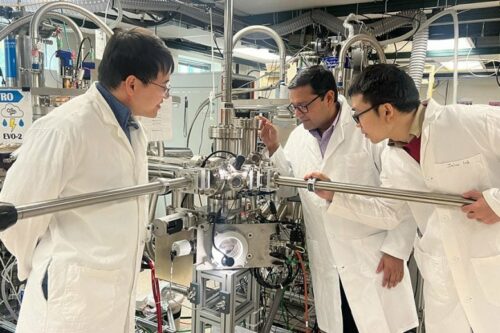Researchers from University of Minnesota have developed a transparent material enabling rapid electron movement for improved electronics and quantum devices.

Scientists at the University of Minnesota (UMN), USA have fabricated a transparent conducting material that significantly increases electron mobility, marking a major step forward for high-performance electronics. This material, developed by the university’s quantum materials design and synthesis group, could redefine technology fields like artificial intelligence, computing, and quantum applications. By enhancing electron speed and maintaining transparency to both visible and ultraviolet light, the new material offers unparalleled performance, appealing to high-tech industries eager for unique solutions in semiconductors.
The material comes as global demand rises for ultra-wide band gap semiconductors which are essential for creating high-power devices that withstand extreme conditions. Industries focused on high-performance technology, from consumer electronics to medical devices, could leverage this advancement to drive durability and resilience in devices. Semiconductors with ultra-wide band gaps are crucial in powering robust electronics at elevated temperatures, extending device lifespans. The research’s findings support the trillion-dollar semiconductor industry as digital and AI technologies continue to evolve.
The team, led by Bharat Jalan, professor & chair, department of chemical engineering and materials science, UMN has designed the material with a unique thin-layer structure, optimising both transparency and conductivity. “This breakthrough is a game-changer for transparent conducting materials, enabling us to overcome limitations that have held back deep ultra-violet device performance for years,” said Jalan. The material, a transparent conducting oxide, opens new possibilities in optoelectronics and high-power applications, setting the stage for more efficient and faster devices across a range of fields.
With precise technical validation, co-researchers Fengdeng Liu and Zhifei Yang, Ph D students, conducted extensive testing to verify the material’s properties. Using advanced electron microscopy, the team showed that the material was free of defects which is a rare achievement in oxide-based perovskites. Andre Mkhoyan, professor, chemical engineering and materials science, UMN explained, “Through detailed electron microscopy, we saw this material was clean with no obvious defects, revealing just how powerful oxide-based perovskites can be as semiconductors if defects are controlled.”
With its remarkable transparency and conductivity, this new material is poised to drive future developments in quantum devices and beyond.













